
views
Boiling Greens to Preserve Flavor and Texture
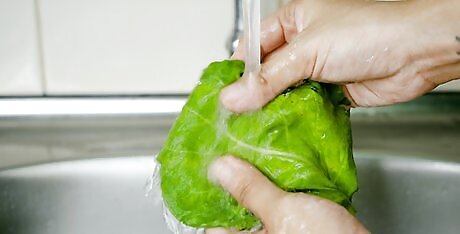
Rinse off the collard greens with cool running water. Wash off both sides of each leaf, checking for dirt and insects as you go. Use your fingers to rub away any obvious patches of dirt. Once you’ve finished cleaning the leaves, set them aside on a dry paper towel or cutting board. You can also place the collard greens in a colander to rinse them. However, make sure that both sides of the leaves get cleaned off if you do this. Did you know? Boiling (otherwise known as blanching) your collard greens helps to halt the enzymes that would lead to the leaves browning, fading, and spoiling. While boiling is an optional step, it’s highly recommended for people looking to store their greens for a long time. If you’re only freezing your collard greens for a few weeks, you don’t have to worry about this process as much.
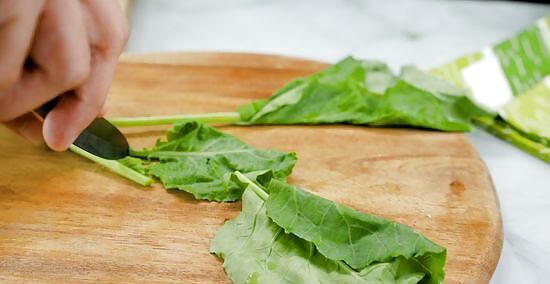
Cut off any excess stems from the leaves. Use a knife to trim down the collard greens until only the leaves remain. At this point, feel free to chop the greens into smaller pieces. You don’t need to finely chop them; instead, cut them in half, if you see necessary. Smaller pieces are a little easier to store, and they might be easier to use for future recipes.
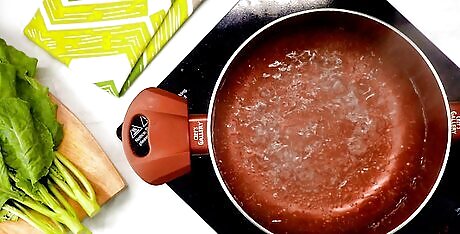
Fill a large pot with water and set it to boil. Pour enough water into a cooking pot to submerge all of your collard greens completely. Turn the stovetop to the highest heat possible to help the water boil more quickly. Wait for lots of steam and bubbles to be present in the water before you continue. Boiling water is necessary to remove the raw surface layer from the leaves.
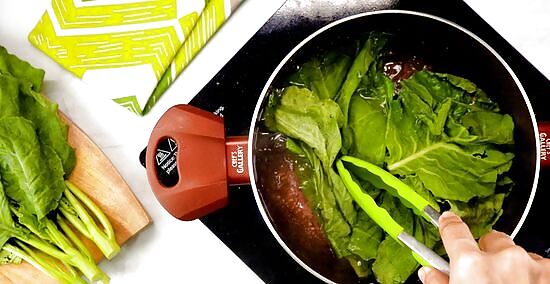
Boil the collard greens for 3 minutes. Dump the rinsed greens into the pot, making sure that all of the leaves are completely submerged. Use a wooden spoon or set of tongs to push down any floating leaves, if necessary. To keep your water temperature hot, place the lid on the pot while letting the collard greens soak for 3 minutes. The process of boiling leafy greens is also known as blanching.
Packaging and Storing Collard Greens
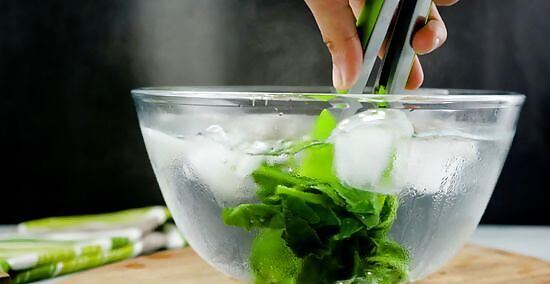
Chill the boiled leaves in a bowl of ice water for 3 minutes. Fill a large bowl with cold water and several ice cubes. Use a pair of tongs to move your greens from the pot into the ice water. Soak the greens for 3 minutes to stop the cooking process and cool the leaves. If you’re preparing a lot of collard greens at once, feel free to cool the leaves off in batches.
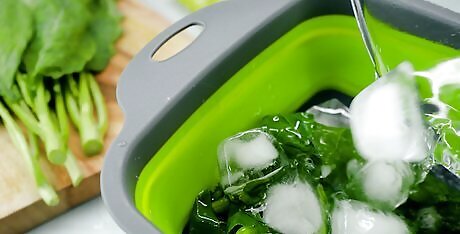
Drain out any excess water from the greens. Move the wet leaves into a colander, then hold the container over the sink. Wait for the extra water to drip out, or gently wiggle the colander to force out any remaining droplets. Once the collard greens are no longer dripping wet, set the colander aside. If the greens are wet when they go in the freezer, then the extra water droplets on the leaves will also freeze. While it’s okay for the leaves to be slightly damp, you’re welcome to blot them dry with a paper towel, as well.
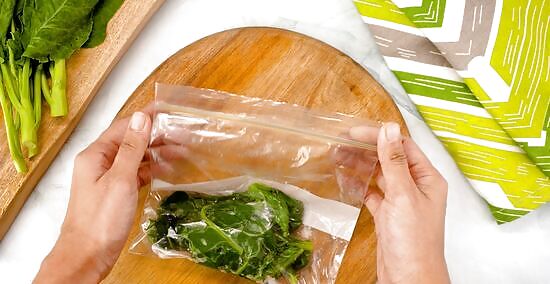
Seal the leaves in freezer-safe plastic bags. Stack the greens or leaf pieces into a large, freezer-safe plastic bag. Tightly package the greens to avoid trapping any excess air into the bag. Try and leave about 0.5 inches (1.3 cm) of space at the top so you can comfortably seal the bag off. If you’re preparing lots of collard greens at once, feel free to use more than 1 bag.
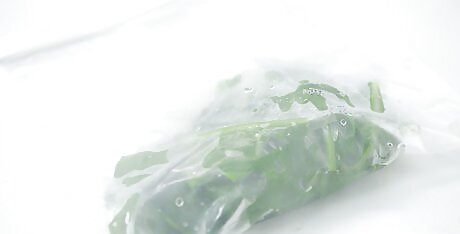
Freeze the collard greens and use them within 10-12 months. Label the bag with the current date, so you can keep track of how old the greens are. To have the freshest and tastiest greens possible, try to eat them within 1 year of freezing! If you didn’t blanch your greens, try to use them sooner rather than later. Did you know? Depending on the recipe, you might not need to thaw out your collard greens. If you’re looking to reheat your frozen greens quickly, add them to a pot of boiling water until they look tender enough to use in your recipe of choice. Be sure to drain the greens before using them! Check your recipe ahead of time to see if the greens need to be thawed or not.













Comments
0 comment